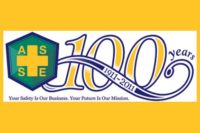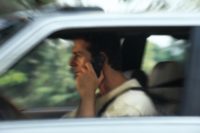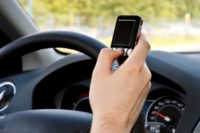 In an unprecedented move, the National Transportation Safety Board (NTSB) is recommending a nationwide ban on the driver use of personal electronic devices (PEDs) while operating a motor vehicle.
In an unprecedented move, the National Transportation Safety Board (NTSB) is recommending a nationwide ban on the driver use of personal electronic devices (PEDs) while operating a motor vehicle.
The action came during today's Board meeting on a 2010 multi-vehicle highway accident in Missouri during which a pickup truck ran into the back of a truck-tractor that had slowed due to an active construction zone. The pickup truck, in turn, was struck from behind by a school bus. That school bus was then hit by a second school bus that had been following. As a result, two people died and 38 others were injured.
The NTSB's investigation revealed that the pickup driver sent and received 11 text messages in the 11 minutes preceding the accident. The
last text was received moments before the pickup struck the truck-tractor.
The Missouri accident is the most recent distraction accident the NTSB has investigated. However, the first investigation involving distraction
from a wireless electronic device occurred in 2002, when a novice driver, distracted by a conversation on her cell phone, veered off the roadway in
Largo, Maryland, crossed the median, flipped the car over, and killed five people.
The recommendation issued today specifically calls for the 50 states and the District of Columbia to ban the nonemergency use of PEDs (other than those designed to support the driving task) for all drivers. The NTSB is also urging the use of the NHTSA model of high-visibility enforcement to support these bans and implementation of targeted communication campaigns to inform motorists of the new law and heightened enforcement.
NTSB Chairman Deborah A.P. Hersman said that more than 3,000 people lost their lives last year in distracted driving-caused crashes.
The NTSB cited incidents it has investigated since 2002:
• In 2004, an experienced motorcoach driver, distracted on his hands-free cell phone, failed to move to the center lane and struck the underside of an arched stone bridge on the George Washington Parkway in Alexandria, Virginia. Eleven of the 27 high school students were injured
• In the 2008 collision of a commuter train with a freight train in Chatsworth, California, the commuter train engineer, who had a history of using his cell phone for personal communications while on duty, ran a red signal while texting. That train collided head on with a freight train – killing 25 and injuring dozens;
• In 2009, two airline pilots were out of radio communication with air traffic control for more than an hour because they were distracted by their personal laptops. They overflew their destination by more than 100 miles, only realizing their error when a flight attendant inquired about preparing for arrival
• In Philadelphia in 2010, a barge being towed by a tugboat ran over an amphibious "duck" boat in the Delaware River, killing two Hungarian tourists. The tugboat mate failed to maintain a proper lookout due to repeated use of a cell-phone and laptop computer
• In 2010, near Munfordville, Kentucky, a truck-tractor in combination with a 53-foot-long trailer, left its lane, crossed the median and collided with a 15-passenger van. The truck driver failed to maintain control of his vehicle because he was distracted by use of his cell-phone. The accident resulted in 11 fatalities.
"In the last two decades, there has been exponential growth in the use of cell-phone and personal electronic devices," according to a statement issued by the NTSB. which went on to note that a Virginia Tech Transportation Institute study of commercial drivers found that a safety-critical event is 163 times more likely if a driver is texting, e-mailing, or accessing the Internet.
A synopsis of the NTSB report and a complete list of the safety recommendations, is available at: .
www.ntsb.gov/news/events/2011/gray_summit_mo/index.html.
NTSB calling for nationwide ban on all PEDs while driving
Was latest distracted driving wreck the last straw?


